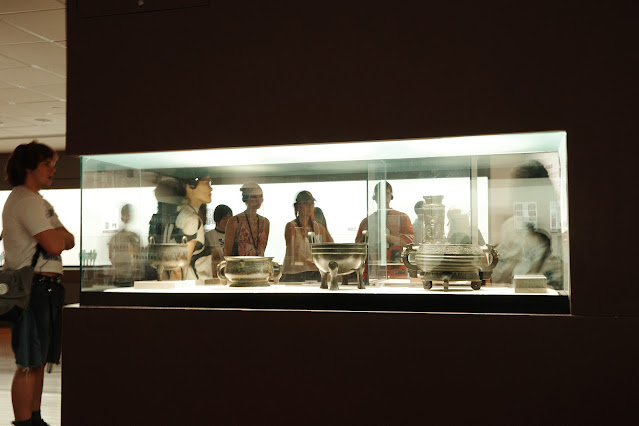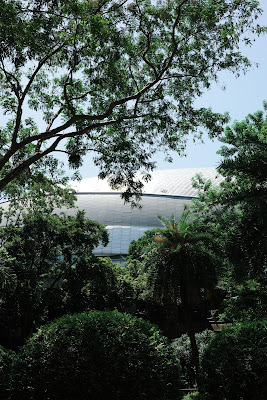One of the most fascinating aspects of Taiwanese culture is its blend of humor and practicality. Upon arrival, I noticed a poster at the airport warning travelers not to bring mooncakes into the country. The language used was humorous and light-hearted, yet it effectively communicated the message. This approach to public communication is indicative of the Taiwanese spirit—relaxed, yet efficient. It’s a refreshing contrast to the often rigid and formal tone seen in public notices in the US.
Our visit to TDRI also highlighted Taiwan’s ability to preserve traditional cultural elements while embracing modern influences. The office itself was housed in a former tobacco factory left by the Japanese, now transformed into a vibrant cultural space. Rather than erasing the past, Taiwan has chosen to incorporate it into its present, creating a living history that informs and enriches contemporary culture. This careful integration of old and new is something I deeply admire and hope to incorporate into my own work as a designer.
During my stay, I also observed how technology is being used to improve urban living and sustainability in Taiwan. Smart city initiatives, such as efficient public transportation systems and eco-friendly urban planning, are seamlessly integrated into daily life. These efforts not only make life more convenient but also demonstrate a commitment to a sustainable future. The use of technology here feels organic, enhancing rather than overwhelming the traditional ways of life.
One of the highlights of my trip was visiting local markets and seeing the incredible craftsmanship that goes into handmade goods. Ceramic art, in particular, is highly popular in Taiwan. I was particularly struck by a vase adorned with dragon motifs, which incorporated traditional Chinese elements in a modern, simplified design. Taiwanese designers have a remarkable ability to distill the essence of their cultural heritage into their work, making it both timeless and contemporary.
Of course, no trip to Taiwan would be complete without trying the local cuisine. The sheer variety of street food available is astonishing, and each dish offers a taste of the island’s rich culinary heritage. From savory night market snacks to delicate pastries, Taiwan is a paradise for food lovers. These culinary experiences have not only satisfied my taste buds but also deepened my appreciation for the country’s diverse culture.
One of the challenges I faced was switching between Chinese and English, especially when helping local students understand some English terms. However, the effort was well worth it. When our group received applause for our hard work, I felt a deep sense of accomplishment and connection with my peers. This trip has profoundly influenced my perspective on design, culture, and sustainability. I’ve gained a newfound respect for my own cultural heritage and am inspired to incorporate more Chinese cultural elements into my future work. Taiwan has shown me the importance of preserving the past while embracing the future—a lesson I will carry with me as I continue my studies and career. In just a few days, Taiwan has already left a lasting impression on me. I can’t wait to see what the rest of this journey holds.





Comments
Post a Comment